Shipping The Vehicle Part 2 : Being There
After deciding that the Santa Marta experiment was a complete bust, I made the call to drive to Cartagena. I wanted to avoid it because of the hassle of the Cartagena port and because the bus had been running poorly and I really didn’t want to deal with it.
I had been trying to get quotes from Cartagena as a backup plan, and it’s a good thing I did. Again, my direct emails to another 20 companies got virtually no response. Our friend Pedro in Venezuela had a contact and this netted us a container quote of $1500 from Cartagena to Houston. A good deal. But, I had more problems getting responses after the initial quote.
I was weary of Roll-On Roll-Off (RORO) shipping because of all the stories and the requirement to empty the vehicle – but, went ahead anyway. The bus was already nearly empty. I found Bode’s country list under the back seat during the clean-out.
The quote for RORO from Cartagena to Galveston came in at…. $350 USD? Seriously?
Everything always works out in the end. That’s been my mantra for as long as I can remember. And, it does.
Working with the ‘agent’ from the Wallenius Wilhelmsen Logistics (WWL) was completely smooth. Prompt, courteous, informative email responses (in English). Note – I had more luck contacting the NAVES office directly rather than using the WWL booking method.
There are plenty of instructions for shipping on the WWL website, so you have some idea what to expect. One of the important ones: “Private Owned Vehicles shall not contain any personal effects and spare parts” really means “don’t leave anything valuable that could fit into a backpack or it might disappear. Hide tools and spare parts as well.”
The rule about having clear operating instruction inside the vehicle, to me, meant to make sure they know how to put on old VW in reverse. And, make sure they don’t blow anything if they have to jump start it.
I’ll spare everyone the details of dealing with the port in Cartagena, but it took 5 full days. Shipping this way is cheap because there is no stuffing and un-stuffing (container) fees and no agent fee – you do the legwork. It takes patience and can be frustrating. It’s hot. There will be innumerable moto taxi rides across town to get paperwork stamped, or get another document, go to the bank, get inspections, etc. The process requires it.
Here’s a fun example of the system: to get permission to enter the Contecar port, you actually have to go to a different port across town – because they don’t process that particular form.
Just go with it.
1971 Volkswagen kombi
length = 443 cm
width = 178 cm
height = 203 cm
weight = 2200 kg
Port fees in Cartagena: $60 USD
Documentation fees to NAVES: $50 USD
Total cost in Cartagena: $110 USD
For some reason, I won’t pay the $350 shipping cost to Wallenius Wilhelmsen Logistics until after the vehicle arrives in Galveston. COD, I suppose.
I’ll give another update after I get the bus, but I expect to pay some port fees on the U.S. side. Still, it seems like a pretty good deal to ship a VW bus from Colombia to Texas.
At least, much cheaper that sending yourself from Colombia to Texas.

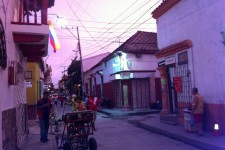


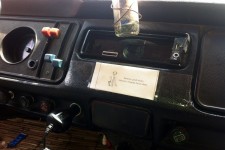
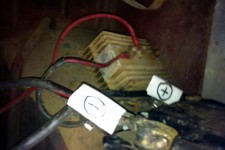
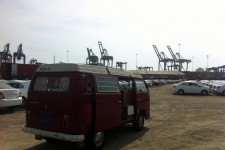

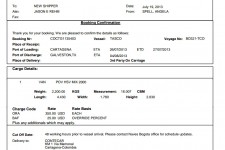


Hide yourself well in the van and it could be a cheap way of sending yourself from Colombia to Texas!!
Alan – the police inspections in Caratagena were pretty thorough. Including squeezing the seat cushions. I doubt I could have smuggled anything sizeable!
You can track the booking number on the WWL website, and track the vessel on marinetraffic. The van is currently in the Gulf of Mexico:
http://www.marinetraffic.com/ais/default.aspx?oldmmsi=258798000&zoom=10&olddate=lastknown
Nice final pictures in Columbia, I must concur that ol Redbeard is looking rather weary.
Red Beard is in Mexico! I’m jealous.
Doug – how do you do that? If I type in ‘Tasco’ for vessel, it tells me it’s out of range.
Well, I’m an Engineer and whenever I have containers going abroad I try to track the vessel, just to keep the customer informed. As an aside, we employ freight forwarders to smooth this kind of stuff over, so you have my total admiration for arranging the shipment yourself.
In this case Tasco didn’t come up on the tracker I usually use, or on the links from the WWL website.
So it was just a straight up Google search on “Tasco Vessel Track” that led me to MarineTraffic.com
Cheers!
Pingback: Vehicle Shipping – USA to Europe – BodesWell